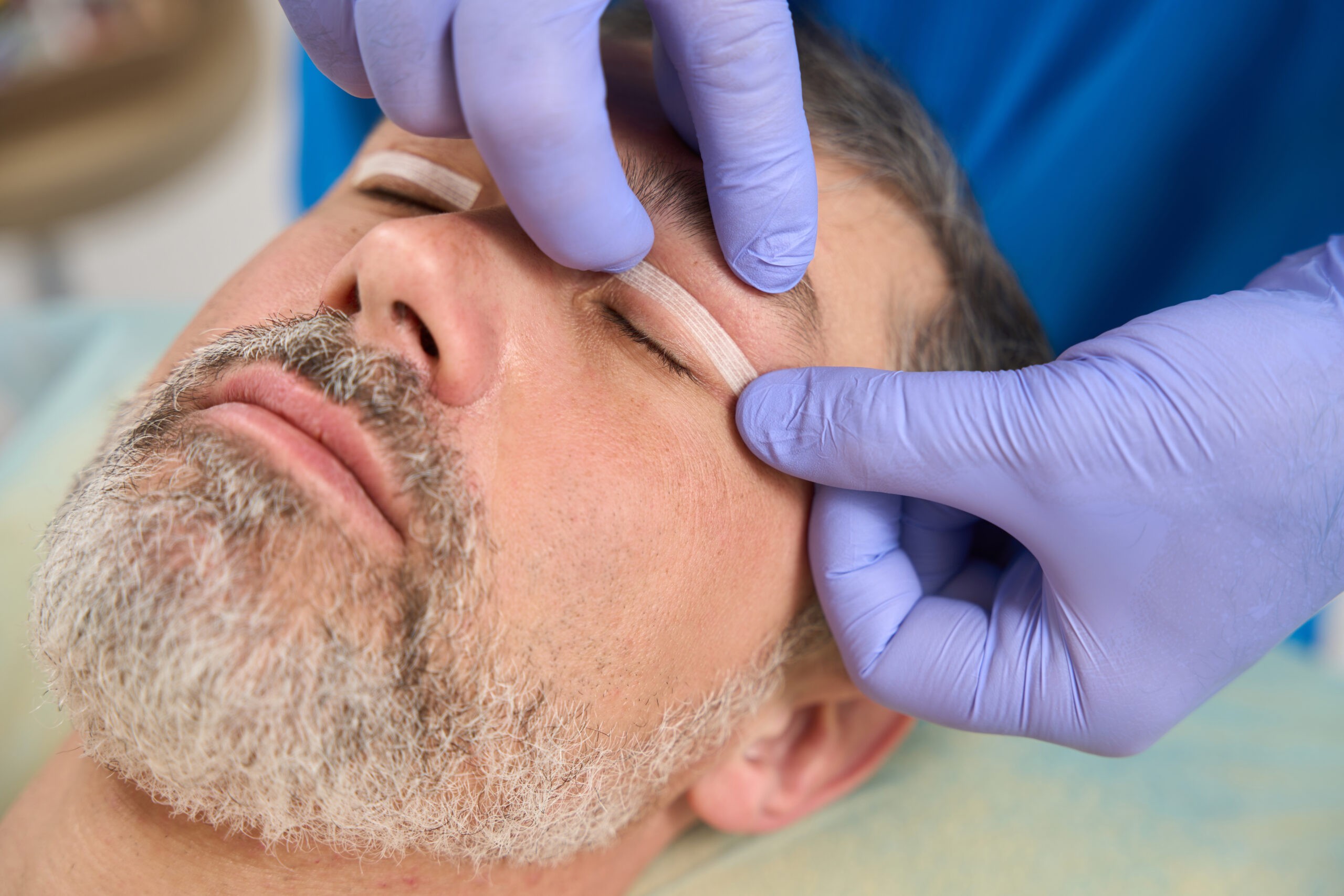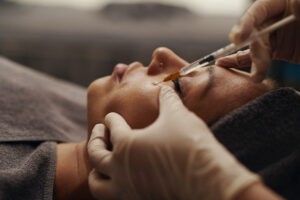
Understanding Bilateral Ptosis
Bilateral ptosis is a condition where both upper eyelids droop lower than normal. This can make it difficult to see clearly and may affect facial appearance. While some people are born with ptosis (called congenital ptosis), others develop it later in life due to aging, injury, or nerve problems.
For many, ptosis is more than a cosmetic concern. It can limit how well the eyes function and cause discomfort or fatigue from trying to keep the eyelids lifted. When both eyes are affected, the strain can be even more noticeable. Bilateral ptosis repair offers a surgical solution to restore the eyelids to a more natural position.
What Causes Bilateral Ptosis?
There are several causes of bilateral ptosis. It can be genetic or arise from changes in the body over time. Common drivers include:
- Aging: Muscles in the eyelids weaken, making it harder to keep them open.
- Neurological conditions: Problems with the nerves that control the eyelid muscles.
- Trauma: Injury or surgery that affects the eyelid area.
- Chronic conditions: Diabetes or myasthenia gravis can lead to muscle weakness.
In children, the most common cause is congenital ptosis. In adults, the cause is usually related to aging or other health issues.
What Is Bilateral Ptosis Repair?
Bilateral ptosis repair is a surgery that lifts both upper eyelids. This procedure helps open the eyes more fully, improving vision and appearance. It is performed by specialists in oculoplastic surgery—doctors trained in eye and eyelid reconstructive surgery.
There are several types of ptosis repair. The method chosen depends on the strength of the eyelid muscles and the cause of the condition:
- Levator resection: This tightens the main muscle (levator) that lifts the eyelid.
- Frontalis sling: Used when the levator muscle is very weak. The sling connects the eyelid to the forehead muscle to assist in lifting.
- Müller’s muscle advancement: A less invasive option for mild ptosis.
These procedures are often done under local anesthesia with sedation, especially in adults. This allows surgeons to adjust eyelid height while the patient is awake.
How Is the Surgery Performed?
Surgery typically takes one to two hours. During the procedure:
- The surgeon makes a small cut in the natural fold of the eyelid.
- The levator muscle is shortened or repositioned to raise the lid.
- The incision is then closed with tiny stitches.
When both eyelids are being repaired, balance and symmetry are key. Surgeons take care to match the height and shape of each lid.
What to Expect After Surgery
Recovery from bilateral ptosis repair is usually straightforward but does require some patience and care. After surgery:
- Swelling and bruising are common for the first week.
- Ice packs help reduce puffiness and discomfort.
- Eyelid tightness may be felt, especially when looking up.
Most patients can return to normal activities within 10 to 14 days. Final results become more noticeable after swelling goes down—usually in 6 to 8 weeks.
You may be asked to:
- Sleep on your back with your head raised for a few nights.
- Avoid heavy lifting and bending over until cleared.
- Follow up regularly with your surgeon.
Are There Risks?
Bilateral ptosis repair is generally safe, but like all surgeries, it comes with risks:
- Uneven eyelid height
- Dry eyes or irritation
- Temporary blurred vision
- Infection or scarring
Working with an experienced oculoplastic surgeon helps reduce these risks. They can also make adjustments if any concerns arise during healing.
Who Is a Good Candidate?
The best candidates for ptosis repair are:
- Healthy individuals without serious eye or medical conditions
- People bothered by drooping in both upper eyelids
- Patients seeking functional improvement in vision
- Those with realistic expectations
Children with congenital ptosis may also benefit from early intervention, especially if their vision is at risk.
Benefits Beyond Appearance
Although many people notice improved appearance after surgery, the main goal of bilateral ptosis repair is better vision and functionality. The surgery can:
- Improve the field of vision
- Reduce eye fatigue or headaches
- Boost confidence and comfort in social settings
With both form and function being improved, many patients feel rejuvenated after recovery.
Advanced Techniques and Personalized Plans
Today’s surgeons use advanced techniques and planning tools to deliver precise, natural-looking results. Digital photography, visual field testing, and muscle assessments allow for custom-tailored treatment plans.
Technology also allows better symmetry and outcome tracking. Many patients now combine ptosis repair with other eyelid or facial procedures for a comprehensive refresh.
Final Thoughts
Bilateral ptosis repair is a trusted solution for individuals struggling with droopy upper eyelids affecting both eyes. Whether caused by aging, nerve problems, or genetics, the condition can disrupt vision and quality of life. Fortunately, surgery offers a clear path to both visual and cosmetic improvement.
If you're dealing with tired-looking eyes, difficulty seeing, or a loss of confidence due to eyelid drooping, it may be time to talk to a qualified specialist.
Book a consultation today to see if bilateral ptosis repair is the right choice for you.

